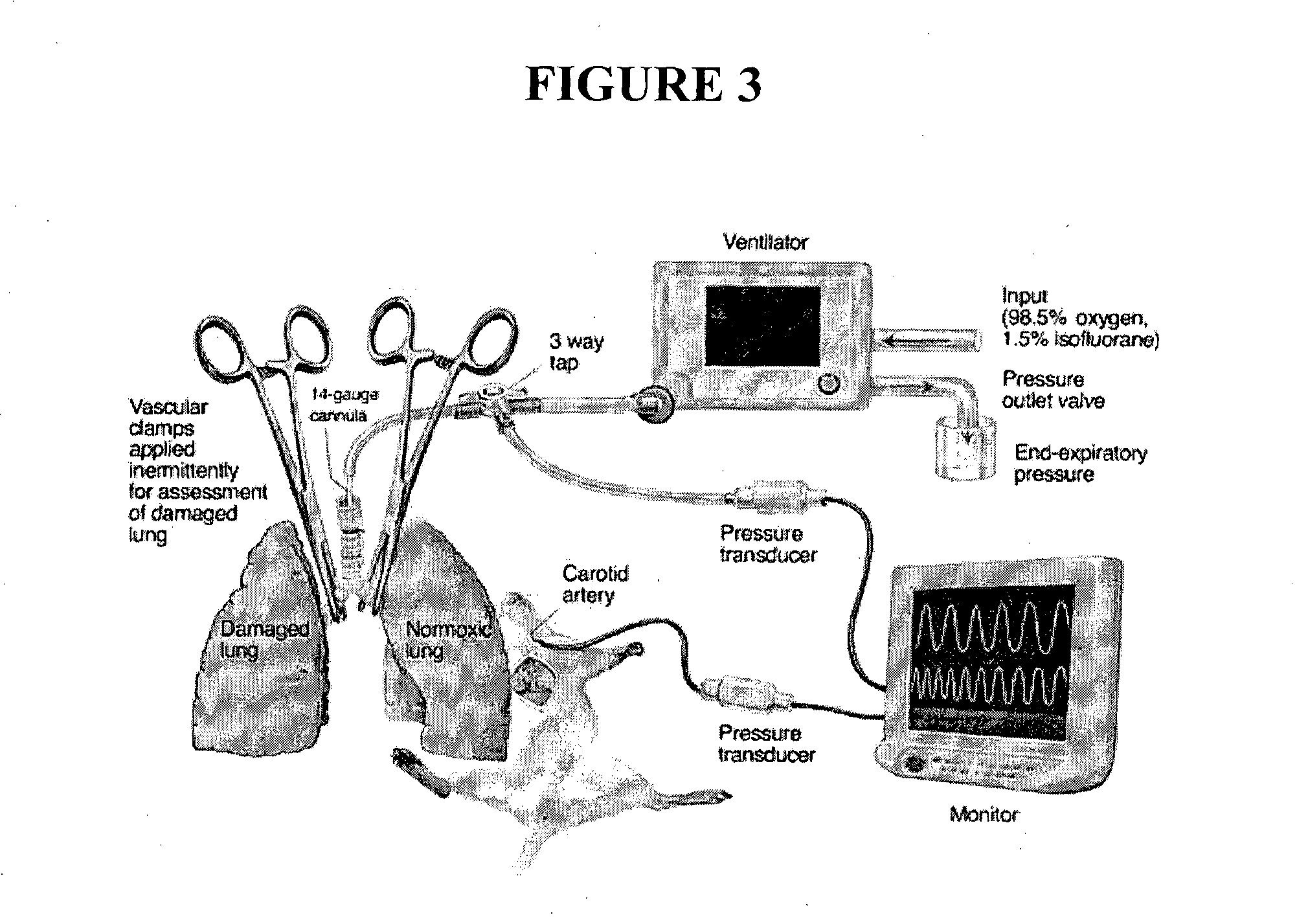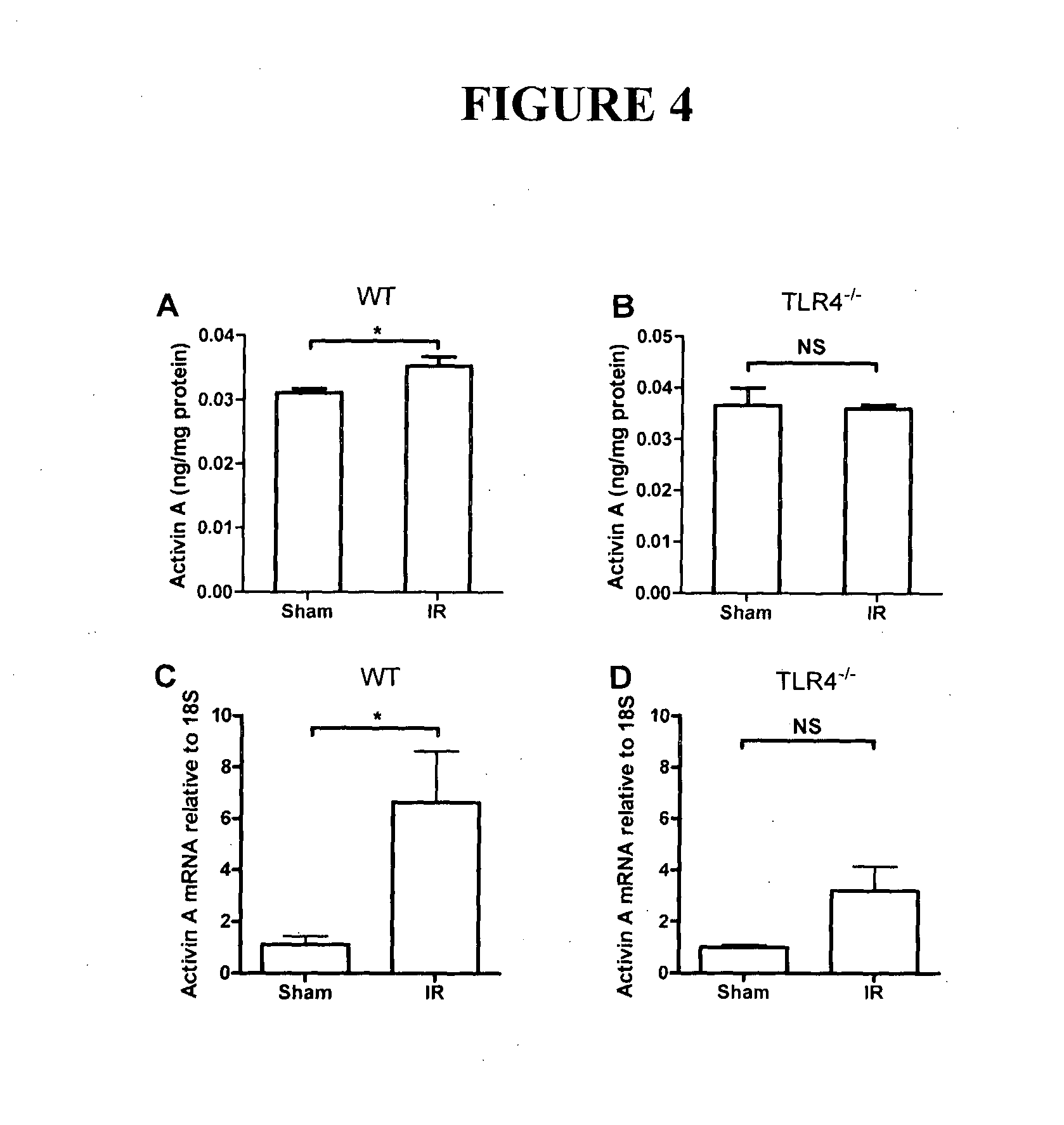Method of treatment and agents useful for same
- Summary
- Abstract
- Description
- Claims
- Application Information
AI Technical Summary
Benefits of technology
Problems solved by technology
Method used
Image
Examples
example 1
Study Details
[0139]This study was approved by the Human Research and Ethics Committee, Alfred Hospital, and adhered to the principle of the Declaration of Helsinki. Patients were recruited from those being treated at the Department of Allergy, Immunology and Respiratory Medicine and that were to undergo a bilateral lung transplant as part of their clinical management. Patients were consented for this study and were of three cohorts based on the underlying requirement for a lung transplant. Group 1, obstructive CF, were those patients who had some airflow obstruction that may or may not be reversible, such that FEV 1 (Forced Expiratory Volume in 1 second) was decreased, as was the forced expiratory ratio (FER). Group 2, restrictive, related to increased FER with low lung volumes typical of idiopathic pulmonary fibrosis (IPF) patients. Group 3, obstructive, non-CF, related to those with severe emphysema, such as in chronic obstructive pulmonary disease (COPD), or s...
example 2
Long Term Follow Up of Lung Transplantation Patients
[0149]Viral infections are common following lung transplantation, with 50% of recipients demonstrating cytomegalovirus (CMV) reactivation in the allograft or blood as well as a further 60% acquiring a respiratory RNA viral infection. As viral infections are postulated to trigger the development of acute rejection and (BOS) the serum activin A, activin B and follistatin levels are measured during and following CMV reactivation and infection. Further acute rejection episodes of grade A1 occur in 25% of patients and grade A2 or greater in 10% in the first 3 months post-transplant. Clinical criteria available include lung function (FEV 1, % best achieved), acute cellular rejection, ICU data, infection (bacterial / fungal / viral), immunosuppression and survival. New patients undergoing lung transplantation have blood collected prior to anesthesia, immediately prior to reperfusion of the lung and at 2, 8 and 24, 48 and 72 hours later, and d...
example 3
Pig Renal Transplants
[0150]Fourteen immature pigs were tranquilized with an intramuscular injection of xylazine and tiletamine / zolazepam, intubated and maintained on mechanical ventilation of 1% isoflurane in a 50% oxygen mixture. Electrocardiogram, oxygen saturation and rectal temperature was monitored throughout the procedure. An external jugular vein was exposed and a single-lumen catheter was inserted, with tunneling of the catheter through the skin to allow blood samples to be collected at various times throughout and following the transplantation surgery. Thereafter, a midline laparotomy was performed, followed by exposure of the right kidney. A right nephrectomy was performed, followed by dividing the renal artery and vein in the hilum to allow anastomosing of a donor kidney. During post-operative recovery, the animal had free access to food and water. Serum derived from the blood samples collected were analysed for activin A and follistatin concentrations using well-validate...
PUM
| Property | Measurement | Unit |
|---|---|---|
| Time | aaaaa | aaaaa |
| Level | aaaaa | aaaaa |
Abstract
Description
Claims
Application Information
 Login to View More
Login to View More - R&D
- Intellectual Property
- Life Sciences
- Materials
- Tech Scout
- Unparalleled Data Quality
- Higher Quality Content
- 60% Fewer Hallucinations
Browse by: Latest US Patents, China's latest patents, Technical Efficacy Thesaurus, Application Domain, Technology Topic, Popular Technical Reports.
© 2025 PatSnap. All rights reserved.Legal|Privacy policy|Modern Slavery Act Transparency Statement|Sitemap|About US| Contact US: help@patsnap.com



